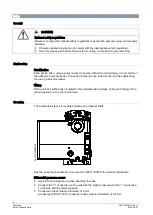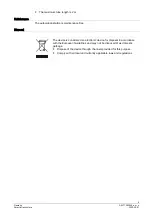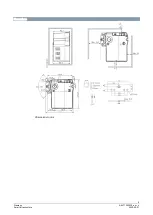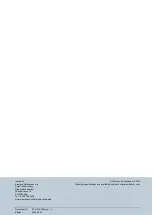
7
Siemens
A6V11393935_en--_c
Smart Infrastructure
2020-09-01
Ambient conditions and protection classification
classes I and II
Degree of protection of housing to IEC EN 60529
Room automation station
IP20
Climatic ambient conditions
Transport (packaged for transport) as per
IEC EN 60721-3-2
Operation as per IEC/EN 60721-3-3
Class 2K3
Temperature -
25...70 °C
Air humidity 5...95% (non-condensing)
Class 3K5
Temperature -
5...50 °C
Air humidity 5...95% (non-condensing)
Mechanical ambient conditions
Transport as per IEC/EN 60721-3-2
Operation as per IEC/EN 60721-3-3
Class 2M2
Class 3M2
Standards, directives and approvals
Product standard
IEC/EN 60730-1
Automatic electronic controls for household and similar
use
EU conformity (CE)
A6V11791489
RCM conformity
A6V11791498
EAC conformity
Eurasian conformity
UL Approbation
Federal Communications Commission
UL as per UL916, http://ul.com/database
cUL as per CSA
–
C22.2 No. 205
FCC CFR 47 Part 15 Class B
ICES003
CAN ICES-3 (B)/NMB-3(B)
Environmental compatibility
The product environmental declaration (A6V11805930*)
contains data on environmentally compatible product
design and assessments (RoHS compliance, materials
composition, packaging, environmental benefit,
disposal).
* The documents can be downloaded from
http://siemens.com/bt/download
FCC regulations
Modification of this device to receive cellular radio telephone service signals is prohibited
under FCC rules and federal law.
This equipment has been tested and found to comply with the limits for a Class B digital
device, pursuant to part 15 of the FCC Rules. These limits are designed to provide
reasonable protection against harmful interference in a residential installation. This
equipment generates, uses and can radiate radio frequency energy and, if not installed and
used in accordance with the instructions, may cause harmful interference to radio
communications. However, there is no guarantee that interference will not occur in a
particular installation. If this equipment does cause harmful interference to radio or television
reception, which can be determined by turning the equipment off and on, the user is
encouraged to try to correct the interference by one or more of the following measures:
Reorient or relocate the receiving antenna.
Increase the separation between the equipment and receiver.
Connect the equipment into an outlet on a circuit different from that to which the receiver is
connected. Consult the dealer or an experienced radio/TV technician for help.
Changes or modifications not expressly approved by the party responsible for compliance
could void the user's authority to operate the equipment.










